

Max Davies
How Audi, BMW, Honda, Mercedes-Benz, and Suzuki started out in Australia, and where they are now
4 Hours Ago
There might be a bit of a drop from the sales numbers of the Ford Ranger and Toyota HiLux down to those of the Mitsubishi Triton but there’s also a bit of drop in price. Is Australia’s third best-selling ute actually the best option for you?
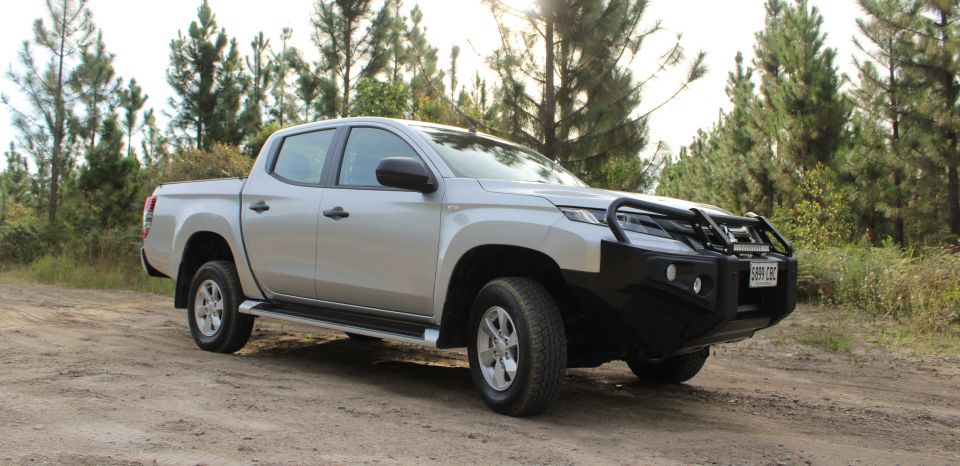


News Editor
New from
$22,490
excl. on-roads

News Editor
New from
$22,490
excl. on-roads


News Editor
New from
$22,490
excl. on-roads

News Editor
New from
$22,490
excl. on-roads
Quickly see how this car stacks up against its competition. Select any benchmark to see more details.
Where expert car reviews meet expert car buying – CarExpert gives you trusted advice, personalised service and real savings on your next new car.
The Mitsubishi Triton is part of the pantheon of best-selling utes in Australia, coming third in the sales race only behind the Toyota HiLux and Ford Ranger.
Year-to-date, the Mitsubishi Triton accounts for just over 13 per cent of the 4×4 ute segment.
The HiLux and Ranger both have over 20 per cent each but the Triton sells significantly better than all other rivals, save for the Holden Colorado which is being buoyed by run-out deals.
The Triton received some meaningful changes for 2019.

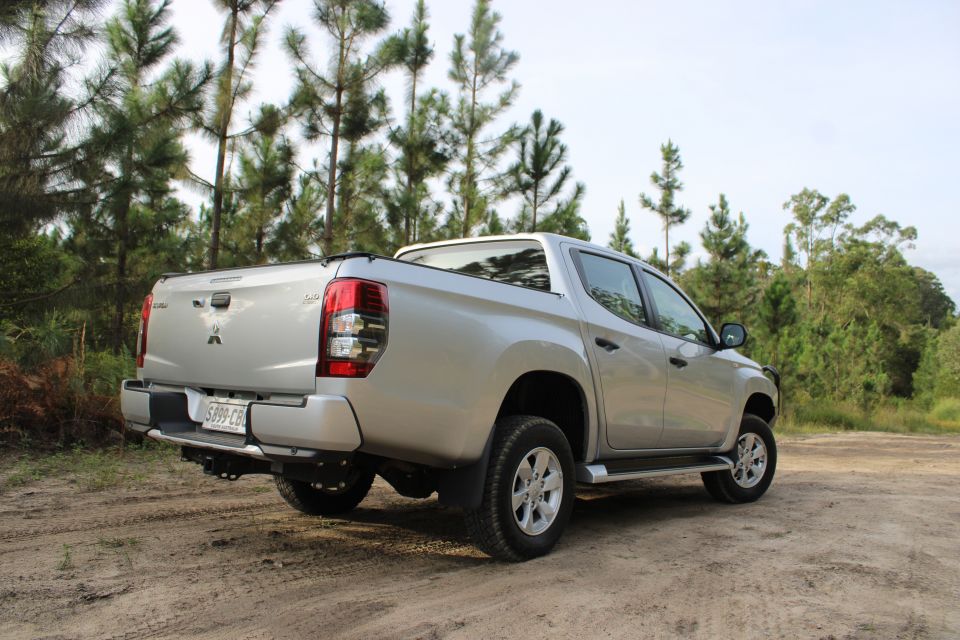
They included a dramatically refreshed front fascia and the introduction of standard autonomous emergency braking across almost the entire range, something that’s still missing from rivals like the Nissan Navara.
The tweaked looks and enhanced safety kit makes the Triton an even more compelling option for consumers looking to buy a dual-cab, four-wheel drive, diesel ute.
The GLX+ Double Cab 4WD ute costs $40,990 before on-road costs with a manual transmission and $43,490 before on-road costs with the automatic, as seen on our tester.
Its level of equipment lines up quite closely with the Ford Ranger XLS and Toyota HiLux SR.
When specified as a dual cab ute with an automatic transmission, the Ranger XLS costs $52,090 and the HiLux SR costs $49,515 – both excluding on-road costs.

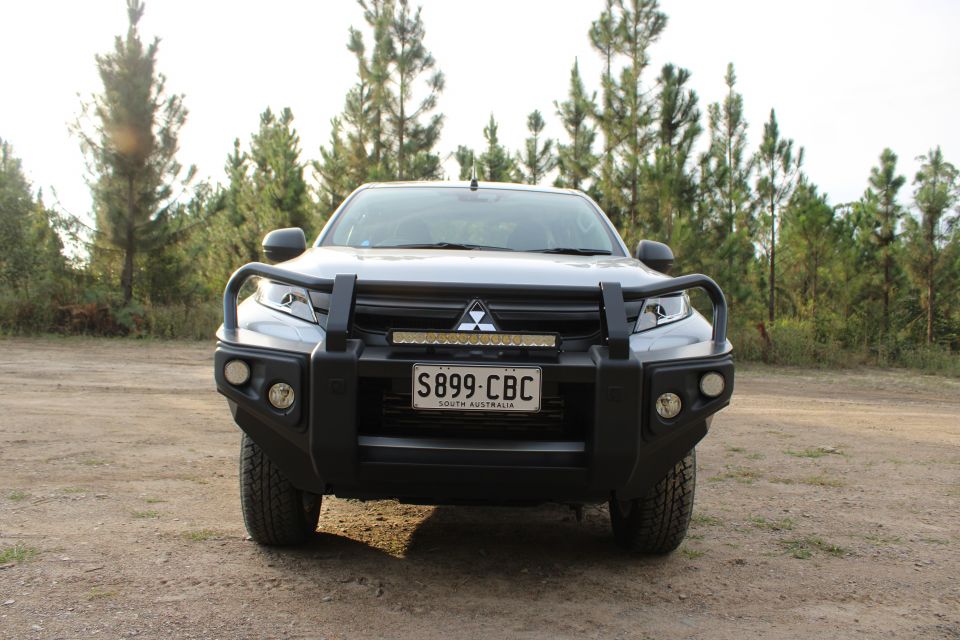
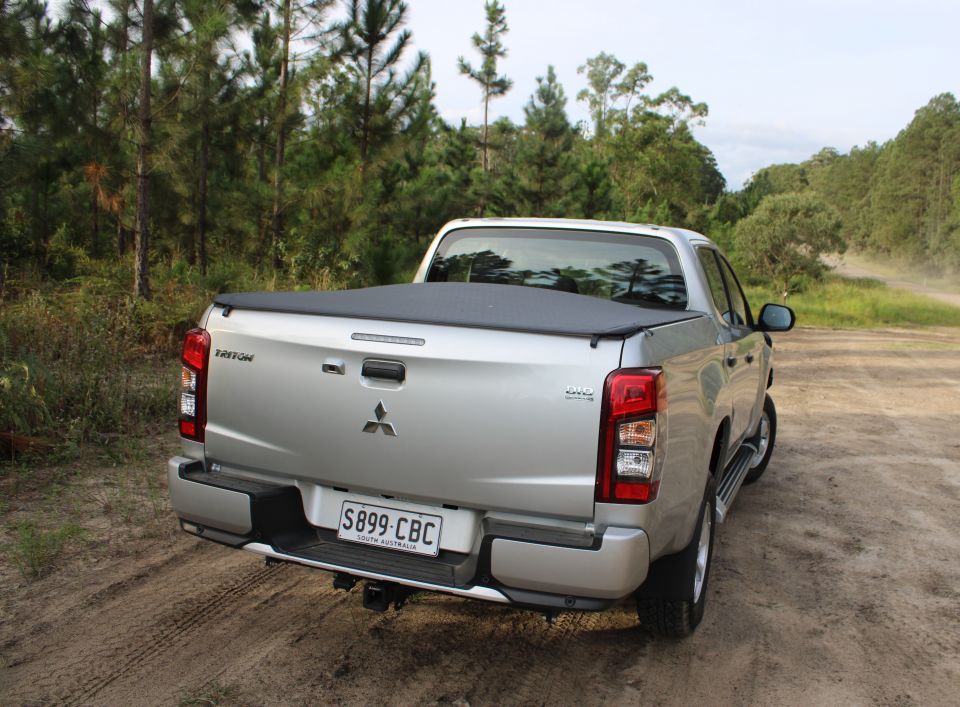
Value for money, therefore, is very much one of the Triton’s strong suits, especially considering Mitsubishi’s regular drive-away offers.
There are cheaper rivals like the Great Wall Steed, LDV T60 and Ssangyong Musso, and indeed the Great Wall and Ssangyong have improved greatly over their predecessors.
The Triton, however, is from a much more established brand with a wider dealership network.
Buy your new car without the stress. It's fast, simple and completely free.

Great service from Travis and team, second time I have used this business would not hesitate to recommend them to anyone
Craig C.
Purchased a Ford Ranger in Sunshine Coast, QLD
CarExpert helped Craig save thousands on his Ford Ranger, now let us save you on your next new car.
Find a dealThe Mitsubishi Triton GLX+ is arguably the highest “work truck” grade of the Triton range.
Step up one more rung to the GLX-R, for example, and you get 18-inch alloy wheels and a leather-wrapped steering wheel. Mod-cons like proximity entry and dual-zone climate control can be found in the GLS above it.
Though it’s not the flashiest Triton, the GLX+ does offer a few meaningful improvements over the regular GLX.
The 16-inch steel wheels are swapped out for 16-inch alloy wheels, for example.
The GLX+ is also the cheapest Triton with rear parking sensors, and swaps out the regular 6.1-inch touchscreen infotainment unit for a 7.0-inch unit with Android Auto and Apple CarPlay.
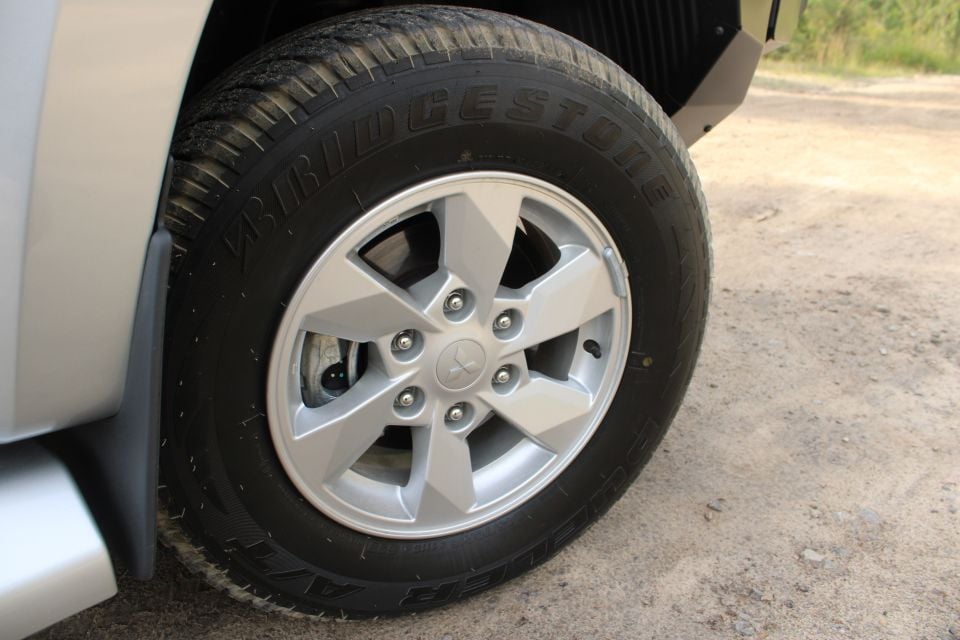
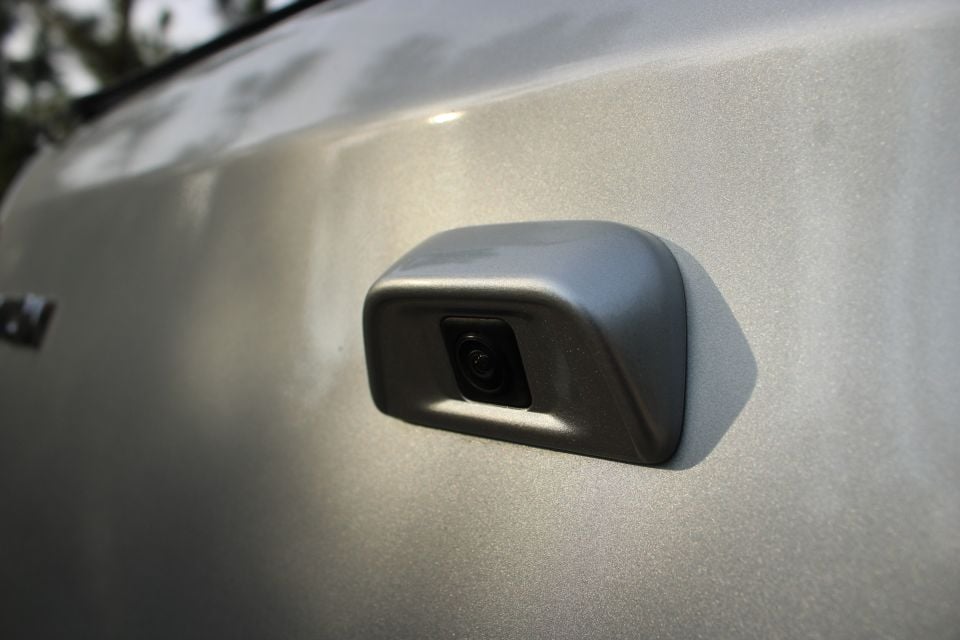
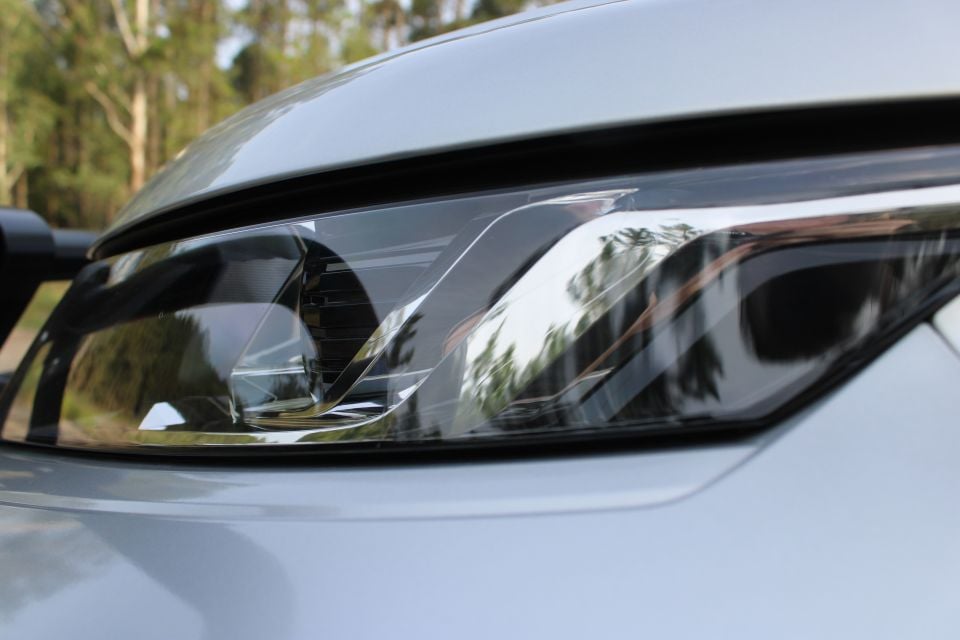
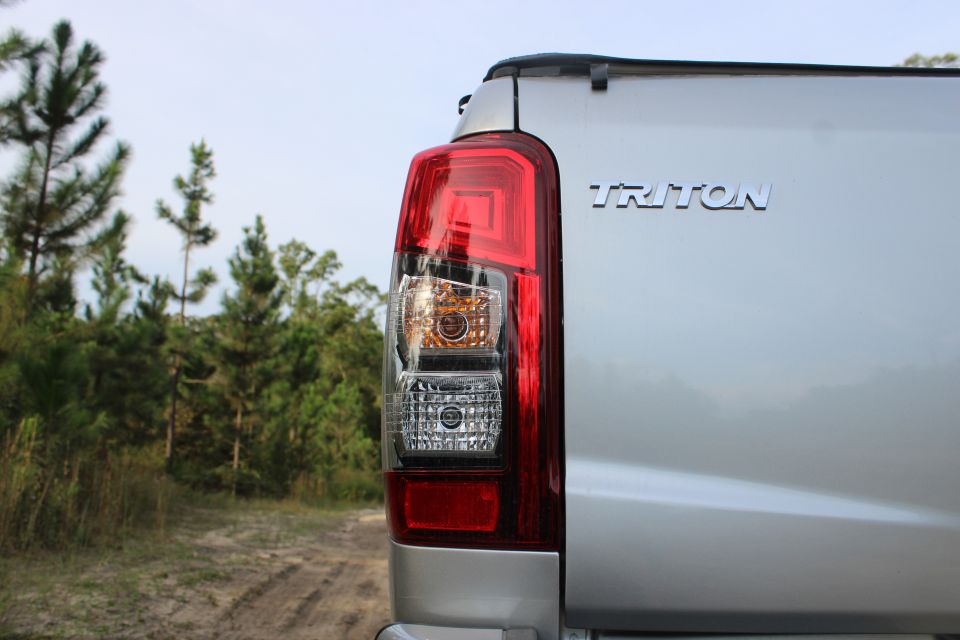
Other standard kit includes a reversing camera, automatic headlights, rain-sensing wipers and a four-speaker sound system.
You won’t find things like push-button start – the key is even an old-school one that doesn’t fold – nor will you find satellite navigation.
Though Mitsubishi’s satellite navigation system is lacklustre, it’s strange that no Triton is offered with it. That’s disappointing news for buyers in rural areas where phone reception can be poor.
The 2019 refresh added a more aggressive “Dynamic Shield” grille up front, which is more distinctive than the old model.
The Triton continues to use somewhat car-like styling cues on a ute body. It’s arguably still fairly easy on the eyes but it doesn’t look as tough or traditionally ute-like as a HiLux or Ranger, which means it looks rather tall and narrow.
As on all Tritons bar the base GLX, there’s standard autonomous emergency braking with forward-collision warning and pedestrian detection, as well as lane-departure warning.
All Triton models also feature anti-lock brakes and front, front-side and curtain airbags plus a driver’s knee airbag.
The Triton was last tested by ANCAP in 2015, when it received a rating of five stars.
It received a frontal offset score of 15.22 out of 16 and a side impact score of 16 out of 16. Whiplash and pedestrian protection were rated Good and Acceptable, respectively.
For a full breakdown of how ANCAP operates and what each score means, check out our feature.

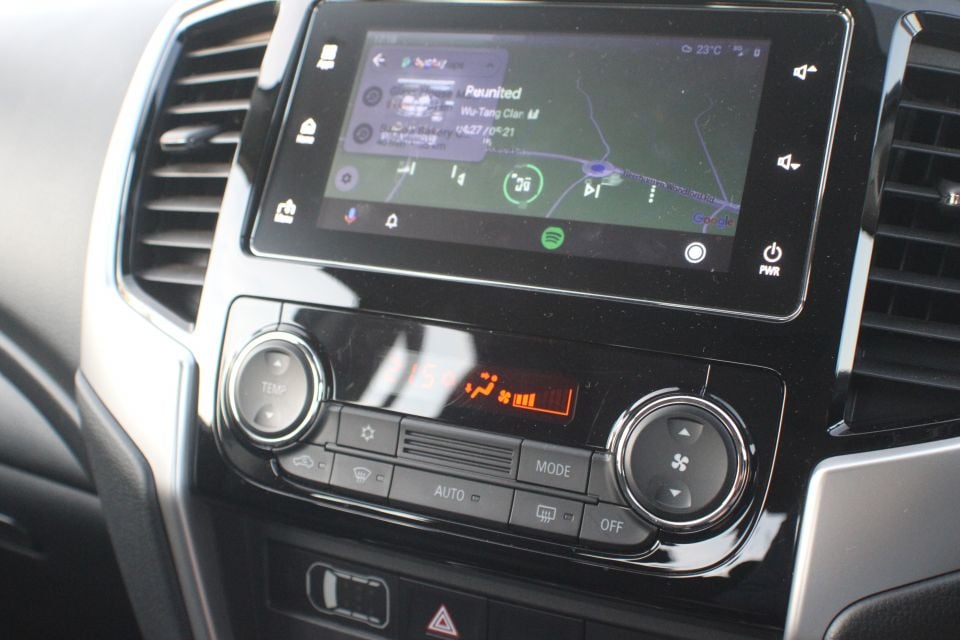
The Mitsubishi Triton’s dashboard is well laid out, with the touchscreen and climate controls situated nice and high on the centre stack.
The lower half of the stack is where you’ll find USB outlets and, interestingly, an HDMI outlet.
On the sides of the centre console, where the gearshift is located, there’s some leatherette trim to improve the ambience. You won’t find soft-touch plastics but everything looks sturdy and well-screwed together.
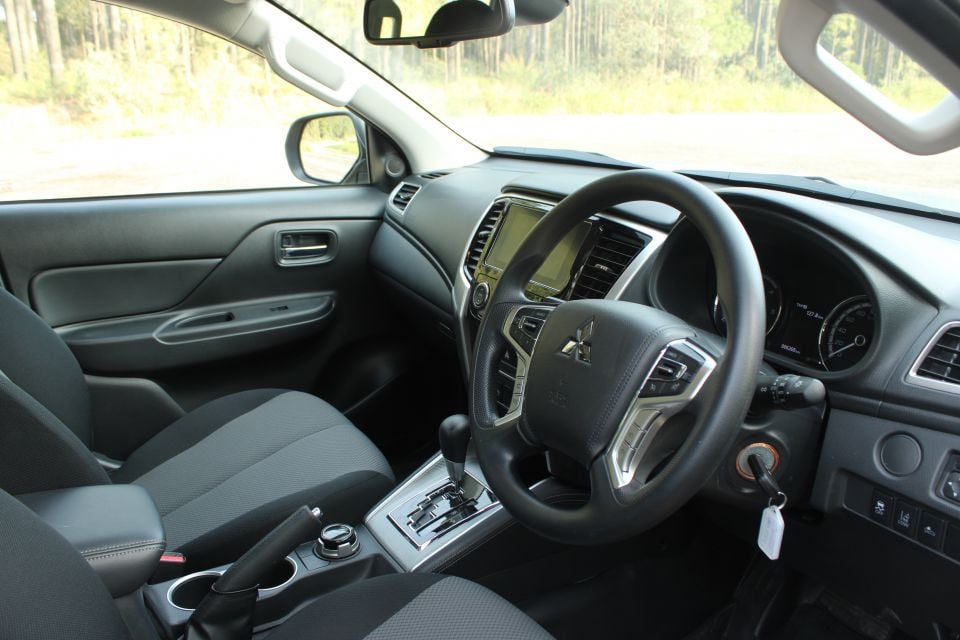
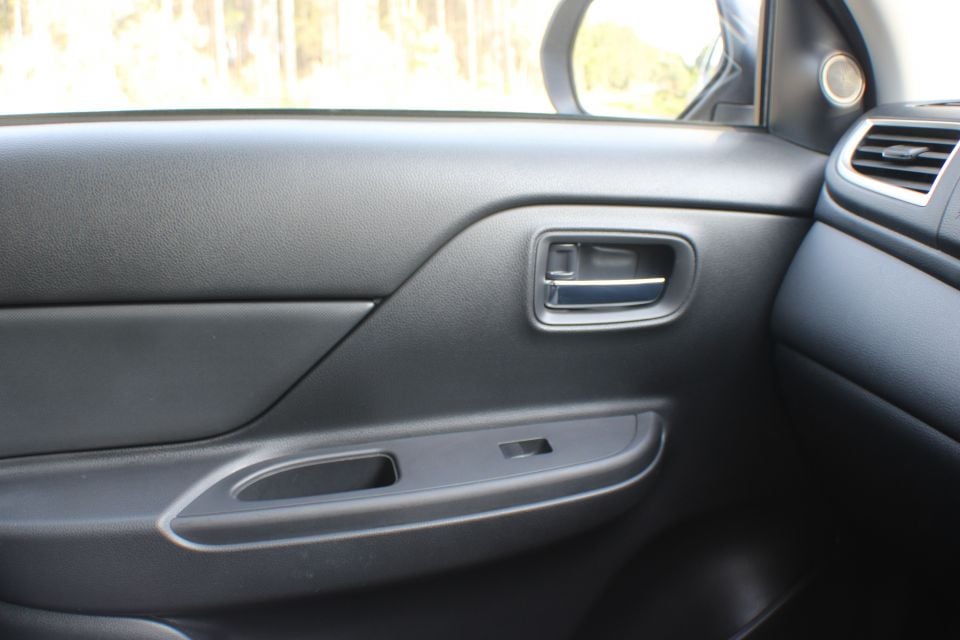
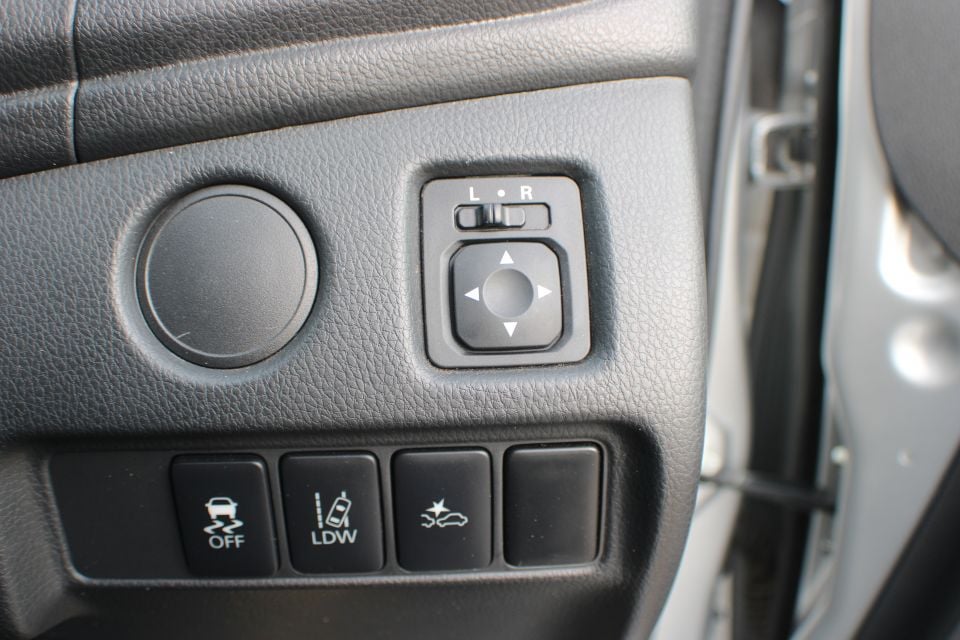
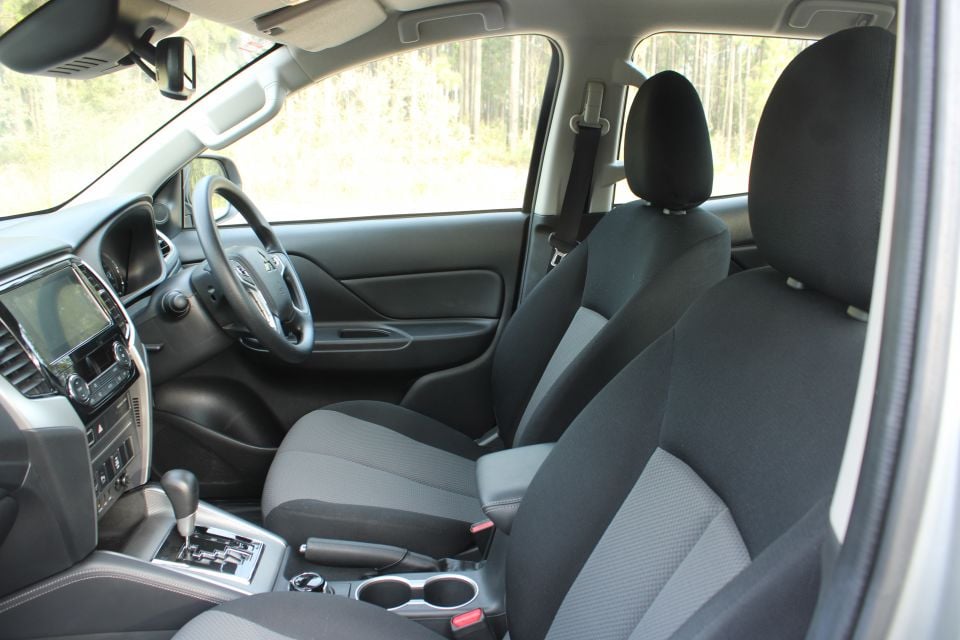
You grip a urethane steering wheel – which isn’t the worst of its kind out there, but a leather-wrapped wheel would be nicer.
Speaking of grip, the front seats are surprisingly good at keeping you in place with bolstering that’s quite thick. The cloth appears hard-wearing but the seats are rather plush and comfortable.
The gauge cluster is simple and easy to read, though it contains Mitsubishi’s cumbersome trip computer interface that can only be controlled with one button.
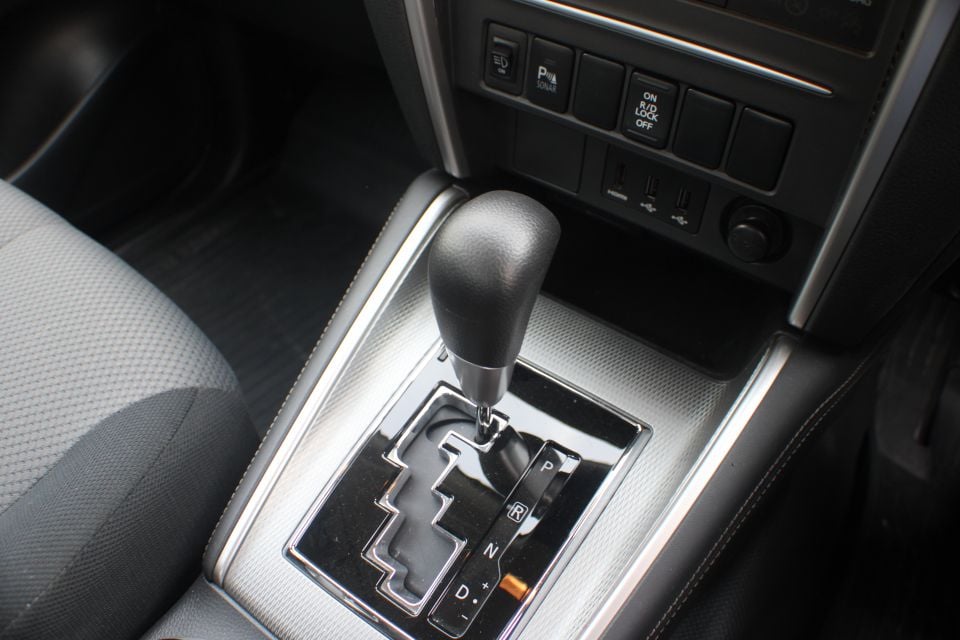
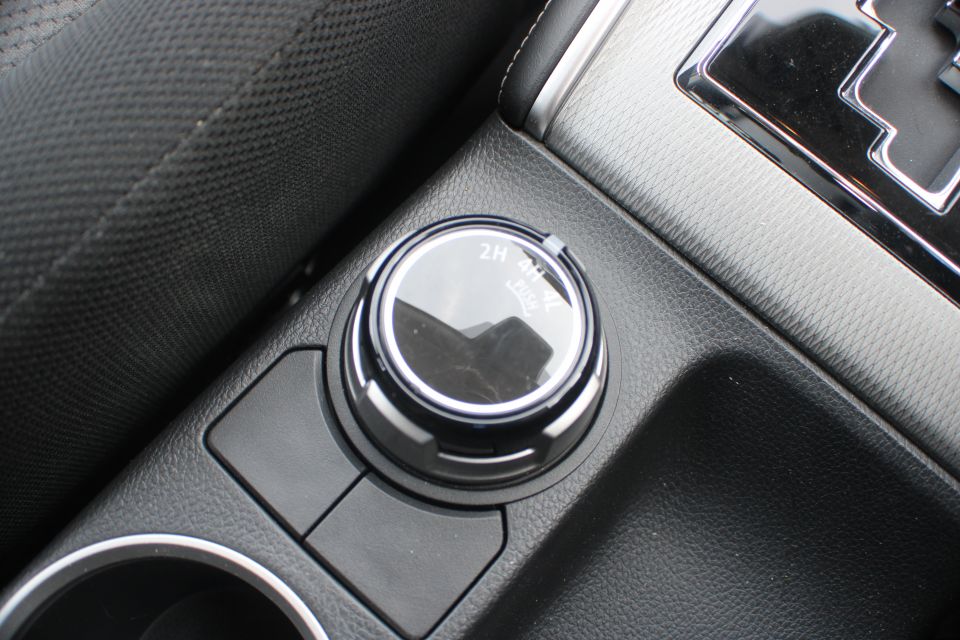

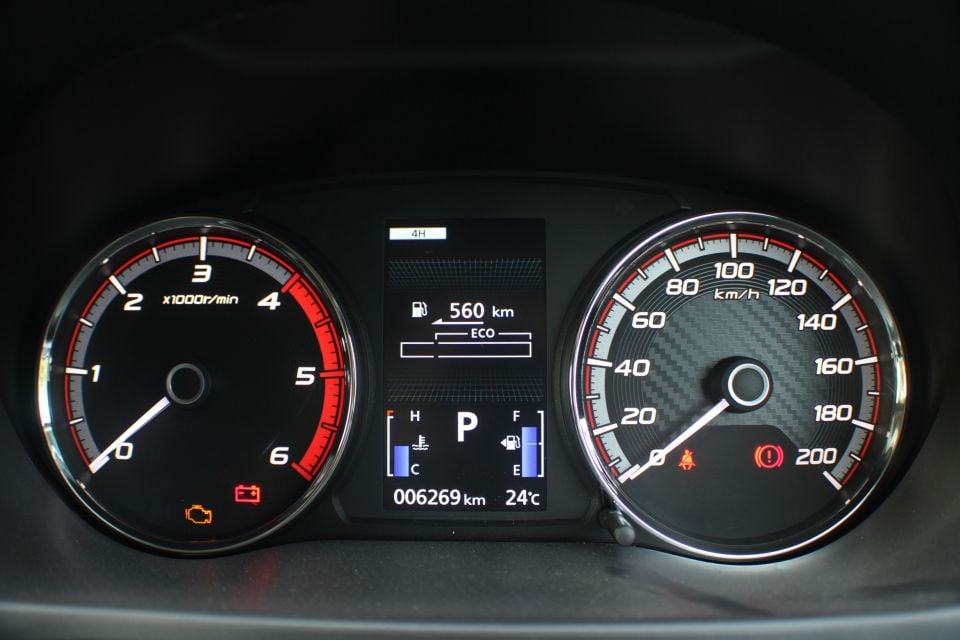
The small screen between the gauges also lacks a digital speedometer, which is a frustrating oversight.
While we wouldn’t expect to see a jumbo-sized screen in a ute, unless it was a big American pickup truck, the 7.0-inch screen in the Triton presents a couple of problems.
There aren’t any redundant buttons for the stereo, for example. That means you’ll have to fiddle around on the touchscreen, which isn’t ideal if you’re wearing gloves or your hands are grimy.
We also experienced persistent display issues with Android Auto.
Android Auto and Apple CarPlay dropouts are hard to pin on a car because it could be an issue with your cable or your phone.
So, though my Android Auto disconnected a handful of times, I’m not willing to blame the Triton.
Unfortunately, one issue that was clearly the Triton’s was the constant glitching of screens. This included previous screen’s graphics overlapping with that of the screen you’ve navigated to, as well as general display issues with maps.


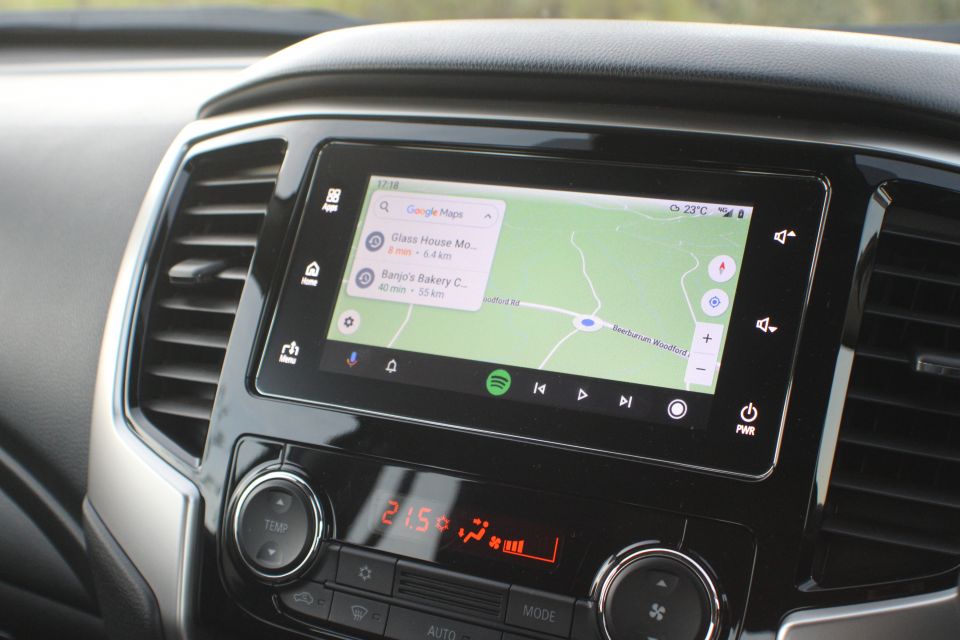
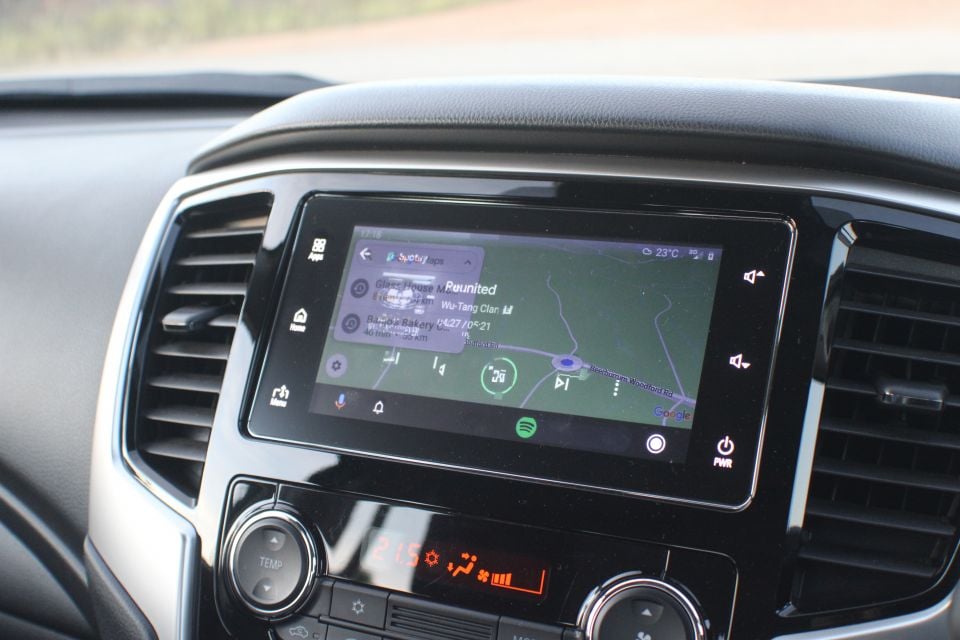
You’ll notice plenty of dual-cab utes in the school drop-off line nowadays as they become a de facto family car for many Australians.
The good news is there’s plenty of room in the back for children and adults alike.There are two ISOFIX and two top-tether anchor points for child seats back there.
For larger occupants, there’s a good amount of headroom and legroom. You mightn’t want to squeeze three adults back there but two adults shouldn’t have any complaints.
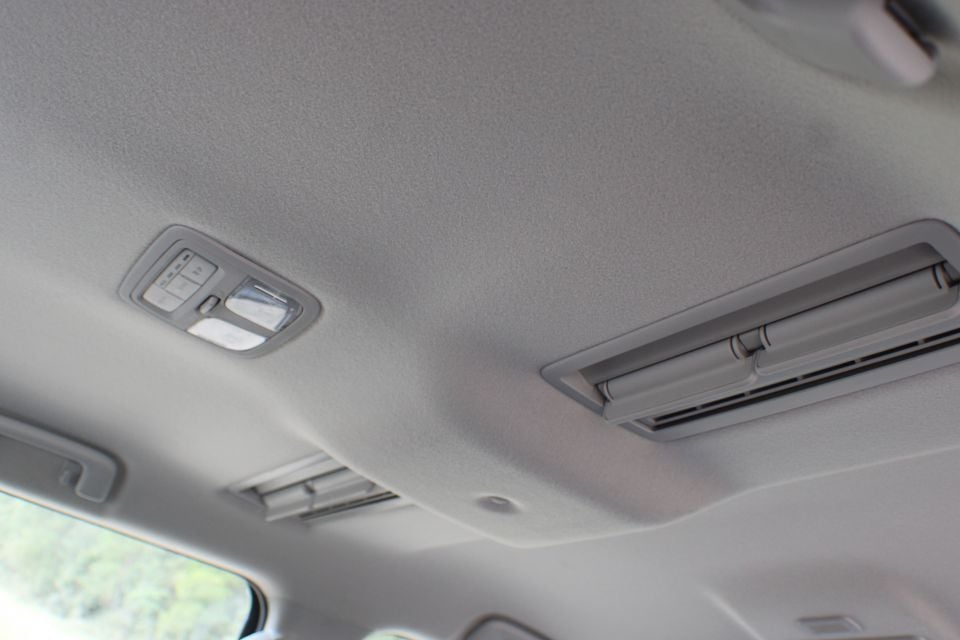
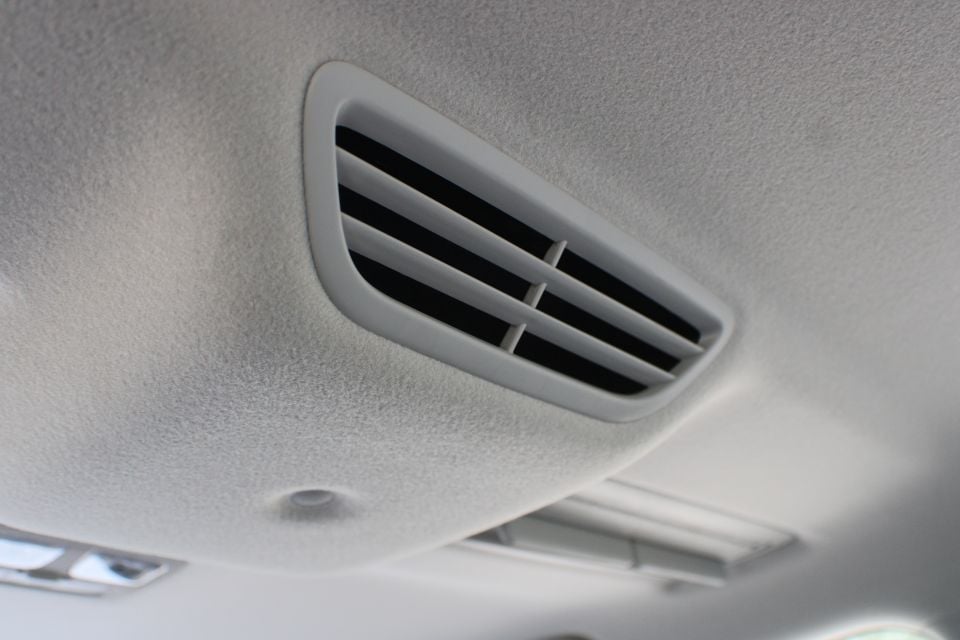
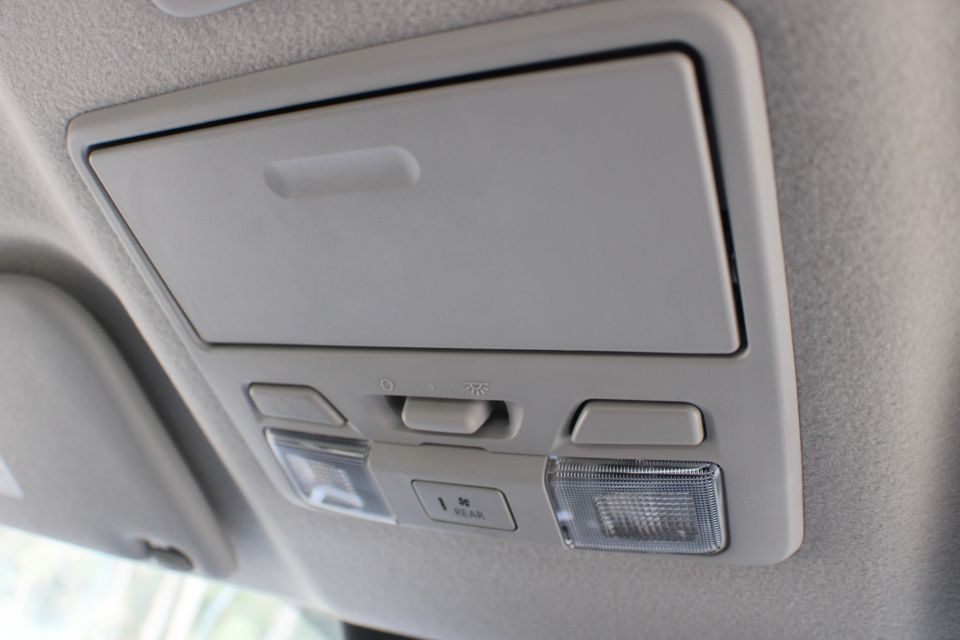
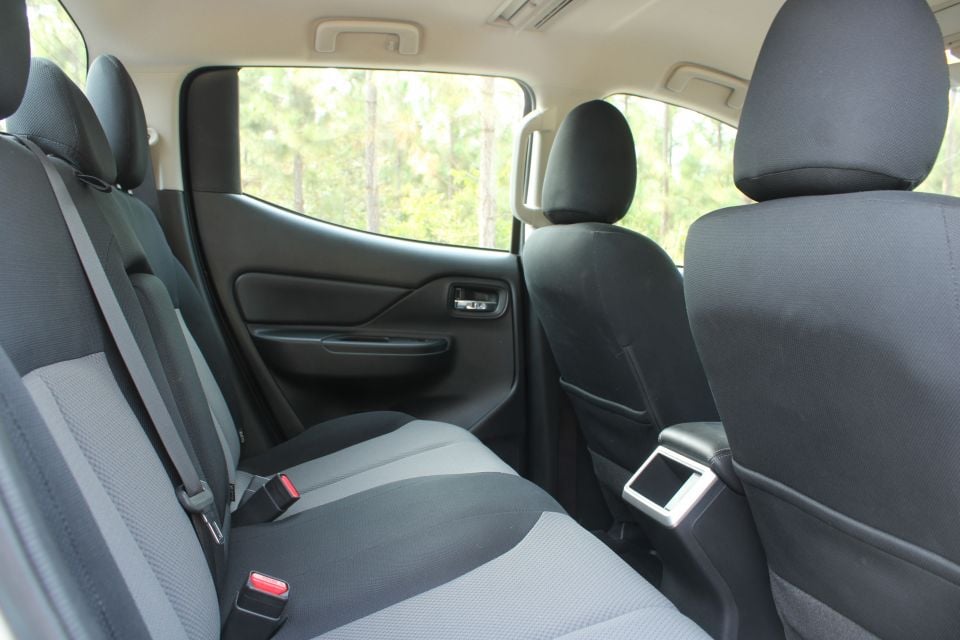
There are no air vents in the base of the centre console but there is a roof-mounted air circulator, which uses vents and flaps to help direct air to the rear of the cabin.
The Mitsubishi Triton’s tray measures 1520mm long, 475mm tall, and 1470mm tall (1085mm at the wheel arches).
Those dimensions are very similar to those of the HiLux and Ranger dual cabs.

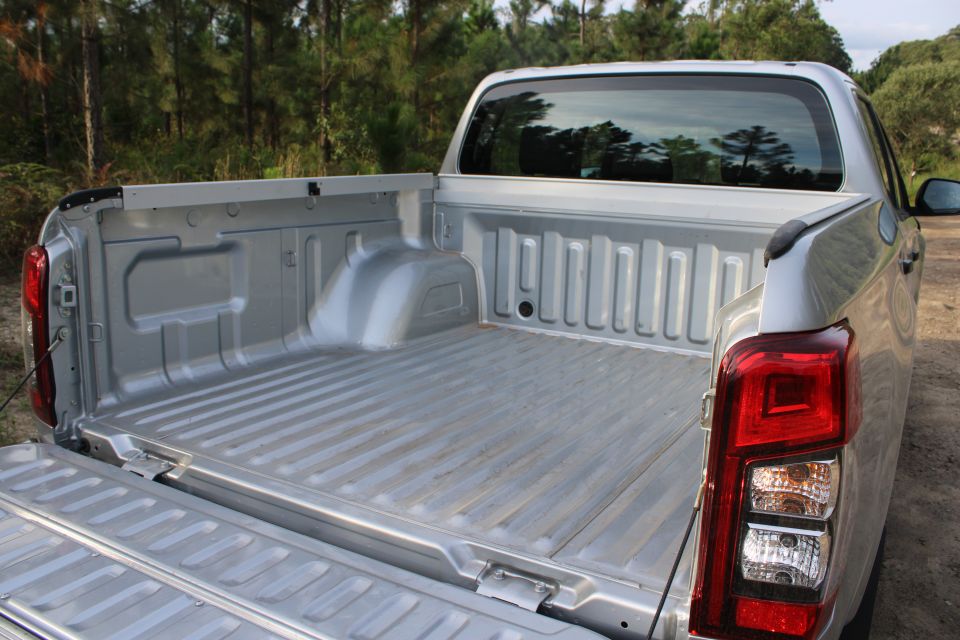
While rivals like the HiLux and Ranger offer two or three different diesel engines, the Triton range is available with just the one.
The 2.4-litre turbo-diesel four-cylinder engine produces 133kW of power and 430Nm of torque. It’s mated to either a six-speed manual or six-speed automatic transmission.
Those outputs align quite closely with those of the 2.8-litre turbo-diesel four in the HiLux SR. The Ranger XLS outmuscles both, however, with 147kW and 470Nm from its 3.2-litre turbo-diesel five-cylinder.
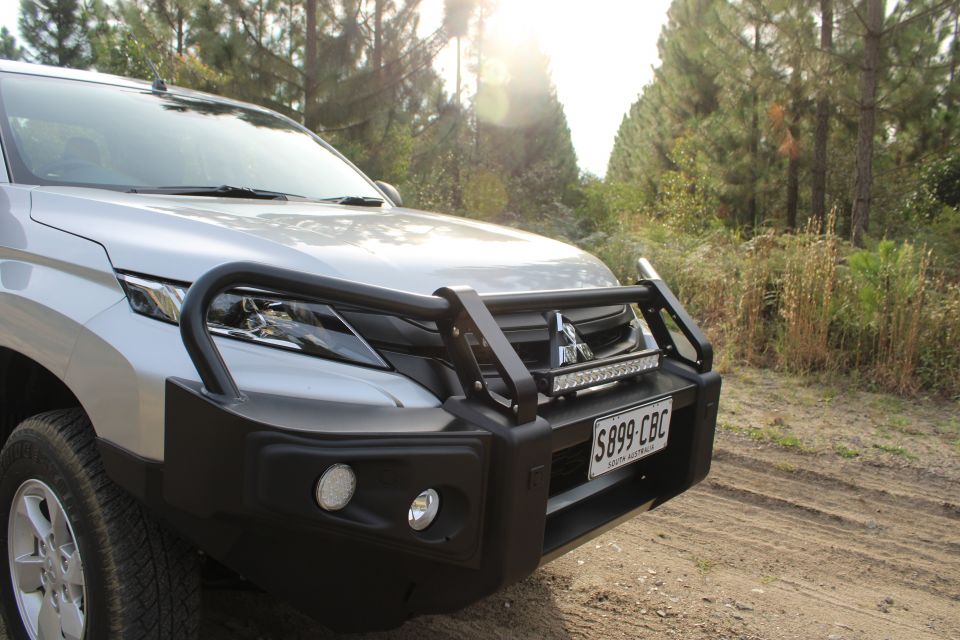
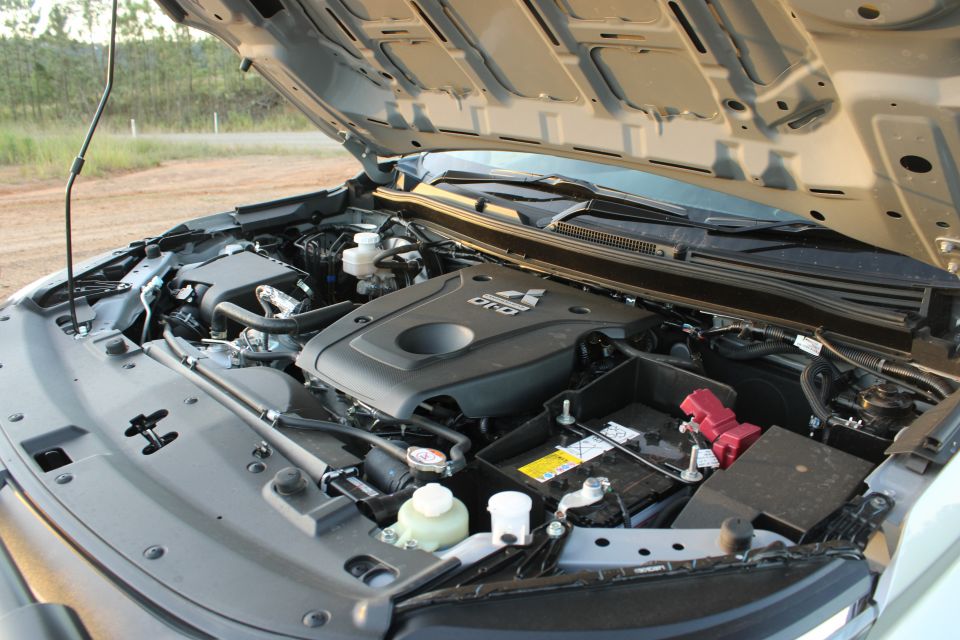
There’s not much to separate the Triton from its rivals in load-lugging abilities.
Maximum payload for the Triton is 945kg, just under the Ranger XLS auto (991kg) and HiLux SR auto (955kg).
Towing capacity is 750kg unbraked and 3100kg braked. The Hilux’s unbraked towing capacity is the same and its braked 100kg higher, while the Ranger’s braked figure is 400kg higher than the Triton.
The Triton’s turbo-diesel has plenty of grunt for both city and highway driving and works well with the six-speed automatic, though the Triton never feels particularly fast.
It is, however, extremely easy to chirp the rear tyres.
The steering is fairly light and direct. It’s a hydraulic set-up, which means the Triton doesn’t offer lane-keeping assist. Instead, there’s only a lane-departure warning system.
The Triton’s ride has a tendency towards being jiggly while unladen, even on well-surfaced roads. A load in the back is likely to quell some of this.
The Triton doesn’t bounce and heave but it feels constantly unsettled. Your bar for ride quality may be lower with a ute but if you plan on using this as a family vehicle, it’s worth noting.
Fortunately, it smooths out on the highway. Wind and tyre noise is also kept mostly at bay, though you’ll hear the diesel four puttering away under the bonnet.
The Triton sits at under 2000rpm on the highway and though you can hear the clatter of the engine, it’s nothing objectionable.
The type of road the Triton performs best on, however, is an unsealed one.
With a flick of the dial to 4H mode, the Triton performs excellently on dirt roads with impressive stability and ride comfort at speeds of up to 100km/h.
Only unexpected depressions in the road rattle the Triton.
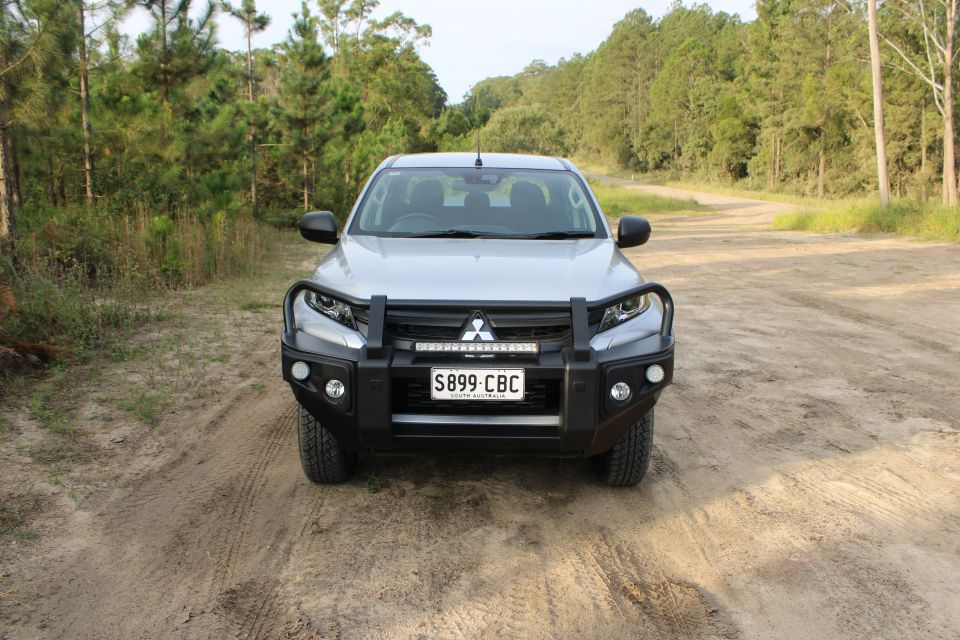
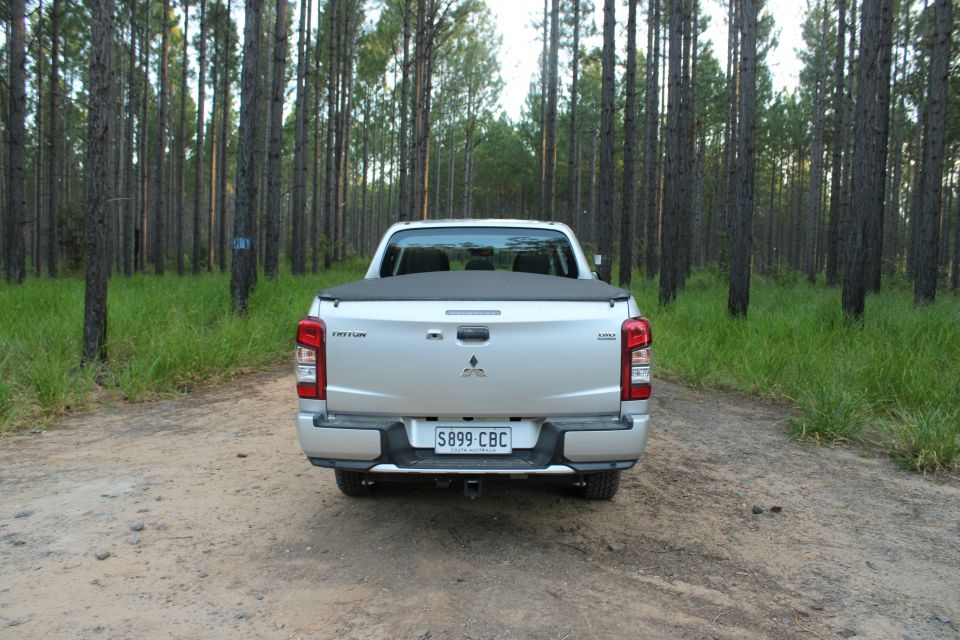
If you want to take the Triton somewhere more challenging, there’s also a 4L mode that uses low-range gearing.
If you’re keen to do some more serious off-roading, it’s worth noting Mitsubishi only offers a locking rear differential in GLS grade and above.
The GLS’s Super-Select 4WD II system also allows you to select full-time four-wheel drive.
In the GLX+ with its Easy Select 4WD, you’ll have to flick the dial every time you reach a gravel road or other rough stuff, then flick it back again when you’re back on bitumen.
Over a mix of city and highway driving, our tester averaged 10.3L/100km. Mitsubishi claims the 4WD Double Cab achieves 8.6L/100km on the combined cycle.
The Triton requires servicing every 12 months or 15,000km – whichever comes first.
Mitsubishi is currently offering a seven-year, unlimited-kilometre warranty and two years of free servicing.
Since 2017, Mitsubishi has offered three years of capped-price servicing with the first three services costing $299 each for diesel Tritons and $199 each for the base petrol Triton.
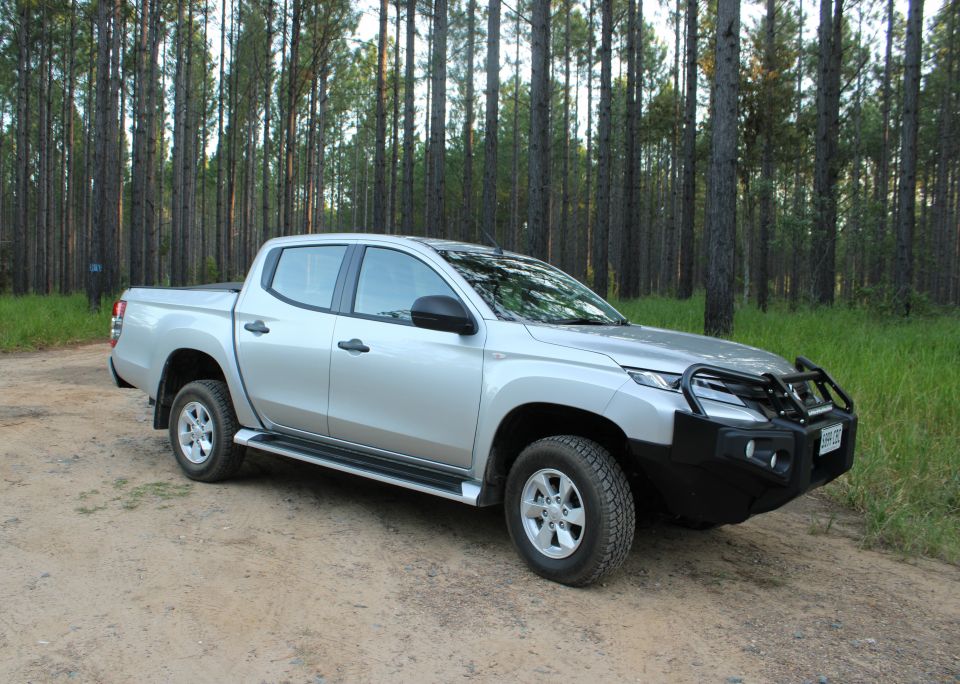
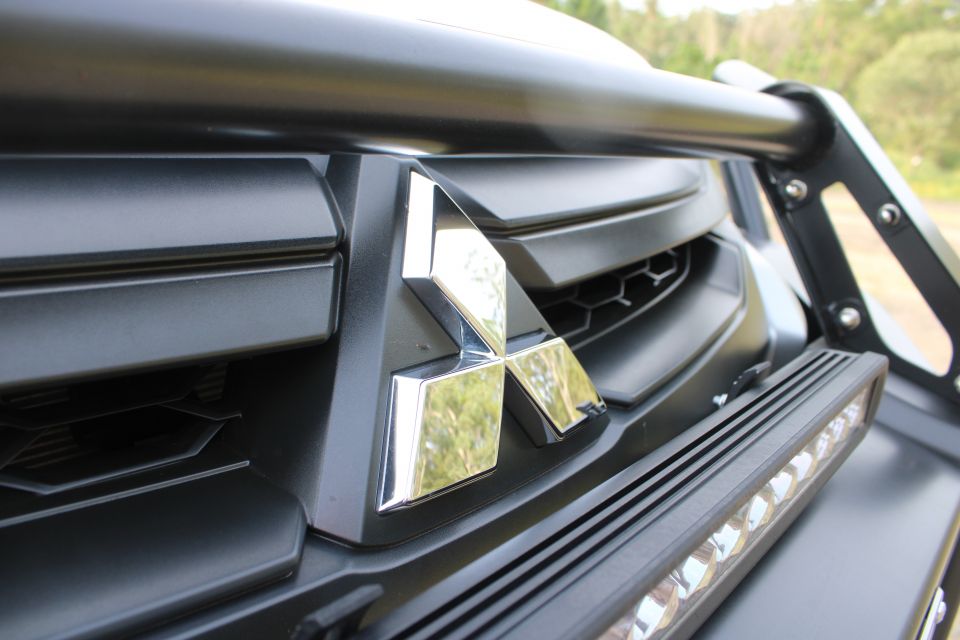
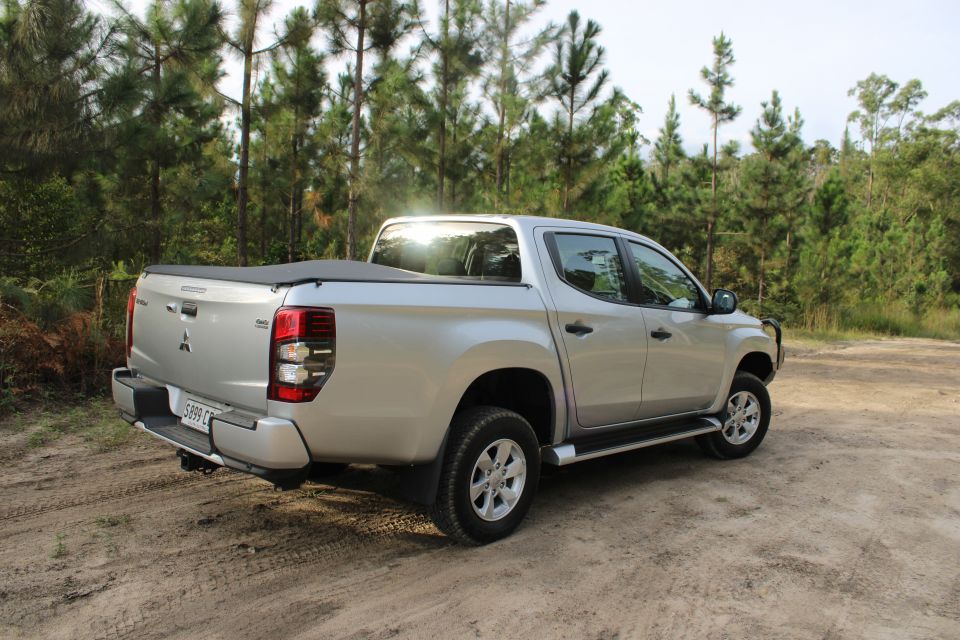
The Triton impresses with its load-lugging capabilities and its flexible turbo-diesel.
Its ride quality can be a little uncouth on bitumen but otherwise it’s a pleasant ute to drive.
It certainly doesn’t feel $6-9000 worse than a similarly-specified HiLux or Ranger.
The value game is strong with the Triton. Even if you were to forego some niceties in one of those other dual-cab 4WD utes, such as alloy wheels, you’ll still be paying thousands more.
Mitsubishi’s sharp pricing even allows you to treat yourself.
For the price of a HiLux or Ranger equipped to the Triton GLX+’s level, you could get a Triton GLS with its more sophisticated four-wheel drive system, more safety equipment, better sound system, and niceties like proximity entry and front parking sensors.
Though it isn’t as comprehensively equipped as a GLS, the Triton GLX+ represents a pretty damn good deal for a dual-cab, diesel, four-wheel drive ute.
Where expert car reviews meet expert car buying – CarExpert gives you trusted advice, personalised service and real savings on your next new car.
William Stopford is an automotive journalist with a passion for mainstream cars, automotive history and overseas auto markets.


Max Davies
4 Hours Ago


William Stopford
4 Hours Ago


Derek Fung
5 Hours Ago


Max Davies
12 Hours Ago


William Stopford
1 Day Ago


Ben Zachariah
1 Day Ago